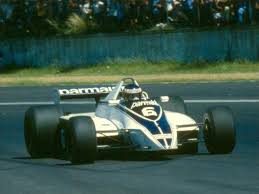Yes Terry, it is more efficent for the underbody to be the primary source of force production towards better L/D, especially in the days with skids. It is my belief that had skids or "sealers" continued into the active suspension days, that we may have seen cars without wings at all and cars generating 6g's + lateral.riff_raff wrote:The underbody of an F1 car is more efficient at producing downforce (ie. it generally has a more favorable L/D coefficient) than the front and rear wings. But the front and rear wing elements are still useful, in spite of their less favorable L/D characteristics, because they can be adjusted to balance the front-to-rear aero grip of the chassis, and the underwing cannot.
All aerodynamicists strive to produce the most lift (or downforce) for the least drag penalty. And since the power required to overcome drag increases exponentially with speed, that is why F1 teams spend so much money on wind tunnel work. It gives the most bang for the buck.
The reason the underbody is more efficient at producing downforce than the front or rear wing is that the basic laws of physics dictate that accelerating a large mass of air at a small rate is more efficient than accelerating a smaller mass of air at a higher rate. Thus the larger mass flow rate at a lower delta V across the under body will produce a given downforce with less drag penalty, than the smaller mass flow rate with a greater delta V across the front or rear wing airfoils.
If you look at some of the unrestricted ground effect F1 cars of the 70's, you'll note that they eliminated the front wing completely.
Regards,
Terry
It was also interesting that in this era, that passing and drafting was at it's highest point vs before and after the ground effect tunnel.
There are a few things to adjusting a "non-skid" GE tunnel in regards to chassis tuning, mainly in adjusting the chassis rake, tunnel height (physically moving and reattaching), reshaping the tunnel, length, strakes, vortex generation, exterior body sculpting,entrance vortices (for sealing and stream guidance purposes), exit vortices (from the top of the exit,ie-very similar to current double diffusers) mostly in aiding and controling movement/location and size of the center of pressure.
But non-skid tunnels are not without trade offs, with the air gap to the ground. While moving the tunnel closer to the ground nets large gains for small adjustments in height, the same is true with moving away from the ground, with large losses. Change it's gap height just far enough and you can lose 80-90-100% of it's ability, with horrific results to the chassis and loss of control to the driver. Losing one tunnel's strength and increasing the other, in a roll situation (say running over a high curb at high cornering speed) is equally undesirable.
Maintaining the tunnel side gap and removing inbound side turbulance is of major interest to one tuning a GE tunnel.
All of these apply to tuning a diffuser, with rules removing most the adjustablity, shortening of the tunnel length (thereby increasing CP importance and making the diffuser very critcal and sensitive to pitch movement.
IMHO- I'm not convinced you can "stall" a F1 diffuser with the stepped undertray, as has been stated by a few, though you can very easily return a diffuser to it's truest diffuser state, thereby greatly decreasing it's low pressure area throat size and rendering the diffuser ineffective



